Honey and garlic are flavor powerhouses that transform a Pork Tenderloin BBQ Recipe into a culinary masterpiece. Honey caramelizes under heat, adding depth and a golden hue, while garlic breaks down to release savory aromas, creating a harmonious blend that enhances the dish's appearance and taste. To achieve perfect results, brine the pork tenderloin, ensuring even cooking and juiciness. Craft the honey garlic sauce by balancing sweet and savory notes over medium heat. Cook the tenderloin via grilling for a smoky flavor or bake for uniform doneness. Present the dish on fresh herbs and vegetables, pair with potatoes or a side salad, and enjoy with wine or beer. Leftovers can be stored in the fridge for 3-4 days or frozen for up to 2 months.
Discover the secrets to achieving pork tenderloin perfection with a mouthwatering honey garlic glaze. This comprehensive guide takes you on a culinary journey, from understanding the magic of honey and garlic to mastering the science behind the perfect glaze. Learn essential tips for choosing the best pork tenderloin, brining techniques, and creating an exquisite sauce. Whether grilled or baked, this Pork Tenderloin BBQ Recipe will elevate your dish to new heights, leaving you with a delectable experience.
- Ingredient Spotlight: Unlocking the Secrets of Honey and Garlic
- The Science Behind the Perfect Glaze: A Chemical Reaction
- Choosing the Right Pork Tenderloin: Tips for a Succulent Result
- Step-by-Step Guide to Brining Your Meat
- Creating the Honey Garlic Sauce: A Balancing Act
- Cooking Techniques: Grilling vs. Baking for Maximum Flavor
- Presentation and Pairings: Elevating Your Dish
- Storage and Leftovers: Ensuring Quality and Taste Over Time
Ingredient Spotlight: Unlocking the Secrets of Honey and Garlic
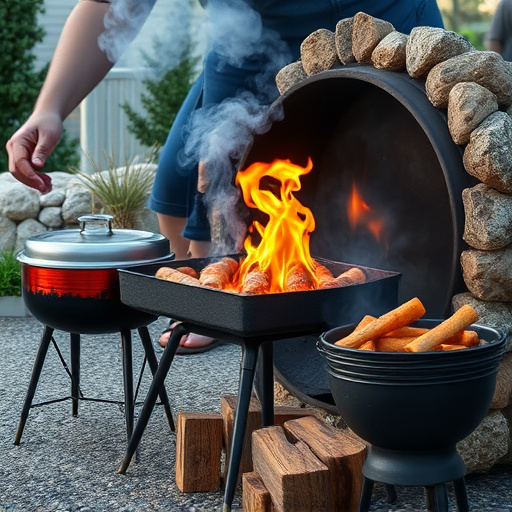
Honey and garlic are a classic combination, and when it comes to enhancing the flavor of your Pork Tenderloin BBQ Recipe, they unlock a world of delicious secrets. Honey, with its natural sweetness, provides a caramelized glaze that coats the meat, adding a sticky, scrumptious layer that’s hard to resist. Its versatility allows it to balance the heat from spices and the pungent notes of garlic, creating a harmonious blend of flavors.
Garlic, on the other hand, brings an aromatic intensity that cuts through the richness of the honey. Each clove offers a burst of flavor, adding depth and warmth to your tenderloin. When combined, these two ingredients create a glaze that not only glams up your dish but also infuses it with complex, mouthwatering notes that will have your family and friends begging for the recipe.
The Science Behind the Perfect Glaze: A Chemical Reaction
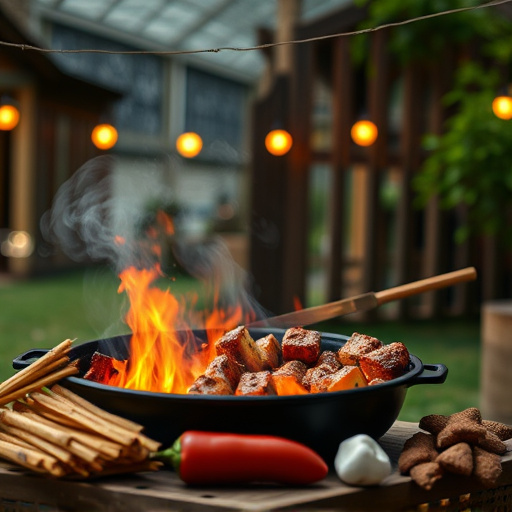
The perfect honey garlic glaze for pork tenderloin is more than just a delicious combination; it’s also a testament to the chemical magic that occurs when ingredients interact. In this case, honey and garlic undergo a series of reactions upon heating, creating flavors that enhance each other. Honey, with its high sugar content, caramelizes under heat, adding depth and a beautiful golden hue to the glaze. This process not only transforms the texture but also releases a rich, molasses-like flavor that complements the pungent notes of garlic.
As the glaze cooks, the garlic continues to break down, releasing sulfur compounds that give pork tenderloin its characteristic savory aroma. The heat causes these compounds to react with amino acids present in the meat, further enhancing its flavor and creating a juicy, tender texture. This chemical dance results in a mouthwatering glaze that not only coats the pork tenderloin perfectly but also deepens its overall taste profile, making it an irresistible BBQ recipe for any occasion.
Choosing the Right Pork Tenderloin: Tips for a Succulent Result
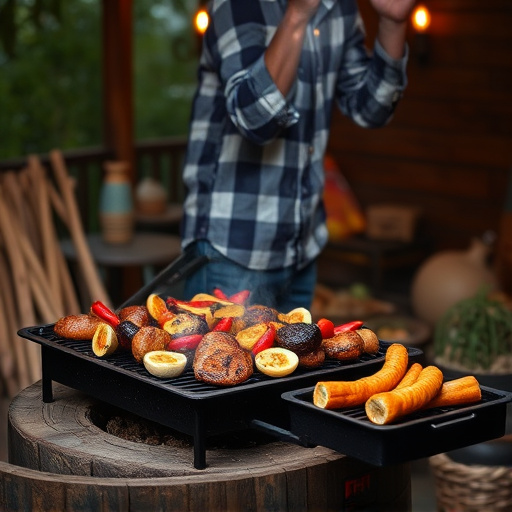
When it comes to achieving pork tenderloin perfection with a honey garlic glaze, selecting the right cut is key. Look for a center-cut pork tenderloin, which is leaner and ensures even cooking. This choice prevents overcooking and drying out of the meat. A good rule of thumb is to choose a tenderloin that is about 1 inch (2.5 cm) thick, allowing for even application of heat and glaze.
To guarantee succulence, consider these tips: purchase your pork from a reputable source, allowing time for it to come to room temperature before cooking for better results. Pat the meat dry with paper towels first; this step is crucial for achieving a beautiful brown crust when searing. Preheating your oven and pan beforehand also ensures even cooking and helps lock in those delicious juices.
Step-by-Step Guide to Brining Your Meat
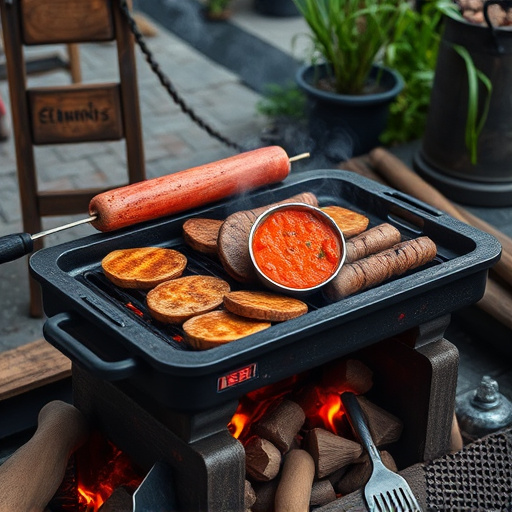
Before cooking your perfect pork tenderloin with a honey garlic glaze, brining is a crucial step to ensure juicy and flavorful results. Here’s a simple guide to help you achieve BBQ masterpiece status:
1. Prepare the Brine: In a large bowl, combine equal parts warm water and coarse salt. For a 3-4 pound (1.5-2 kg) pork tenderloin, use about 1 cup (240 ml) of salt in 2 quarts (2 L) of warm water. You can also add sugar, herbs, or spices for enhanced flavor. Stir until the salt dissolves completely.
2. Submerge Your Pork: Place your clean, dry pork tenderloin into the brine solution, ensuring it’s fully submerged. Cover the bowl with plastic wrap and refrigerate for 12-24 hours. The longer it brines, the more tender it will become, but be mindful not to exceed 24 hours or the meat might become too soft.
Creating the Honey Garlic Sauce: A Balancing Act
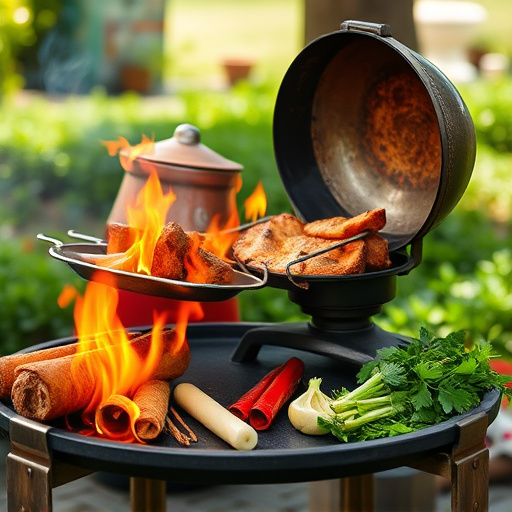
Creating the Honey Garlic Sauce is an art that involves balancing sweet and savory flavors. For this pork tenderloin BBQ recipe, start by combining honey and garlic in a saucepan over medium heat. Allow the mixture to simmer gently, stirring occasionally, until it thickens slightly and reduces to your desired consistency. The key lies in gradually adding a splash of soy sauce and a pinch of red pepper flakes for depth and heat. Continue cooking until the sauce becomes glossy and coats the back of a spoon—perfect for glazing your tenderloin. Adjust seasoning with salt and pepper according to taste, ensuring the flavors meld together seamlessly.
Cooking Techniques: Grilling vs. Baking for Maximum Flavor
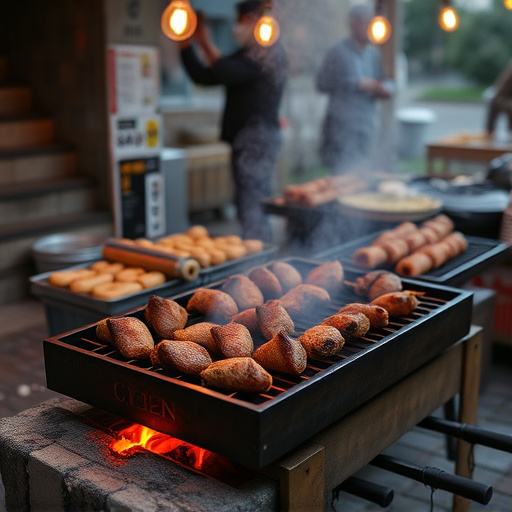
When it comes to cooking pork tenderloin, grilling and baking are two popular methods that can elevate your dish to perfection. Both techniques offer unique advantages, but for a mouthwatering BBQ experience, grilling is often the preferred choice for this cut of meat. The direct heat from the grill imparts a smoky flavor that’s hard to replicate in the oven. Grilling allows you to create delicious char marks on the surface of the pork tenderloin, enhancing its texture and aroma. This cooking method also ensures even cooking, resulting in juicy, tender meat with a rich garlic-honey glaze.
In contrast, baking can be ideal for achieving a more uniform doneness, especially if you’re aiming for a specific internal temperature. It’s a great choice when you want to fill the tenderloin with flavorsome fillings or sauce without worrying about overcooking the exterior. However, for maximum flavor and that distinctive BBQ twist on pork tenderloin, grilling allows you to capture the essence of charring and smoking, creating a dish that truly sings with taste.
Presentation and Pairings: Elevating Your Dish
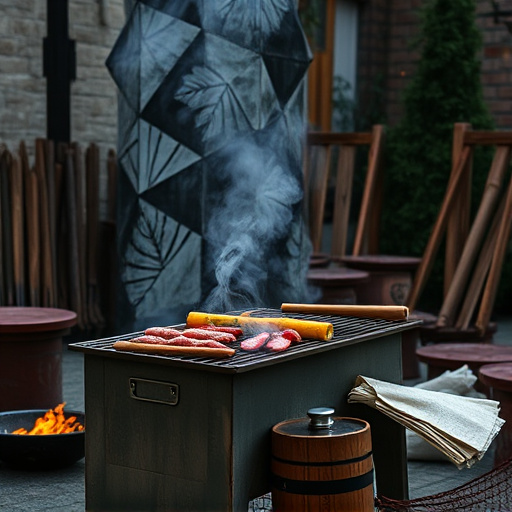
Presenting your Pork Tenderloin BBQ Recipe on a bed of fresh herbs and vegetables is a sight to behold. The glistening, golden glaze catches the light, promising a burst of flavors in every bite. Pair this dish with roasted potatoes or a side salad for a balanced meal that’s perfect for a weekend dinner or special occasion. The rich garlic and sweet honey combination complements the tender pork, creating a harmonious blend that leaves your taste buds craving more. For an extra touch, serve it with a chilled glass of white wine or a crisp craft beer to enhance the overall dining experience.
Storage and Leftovers: Ensuring Quality and Taste Over Time
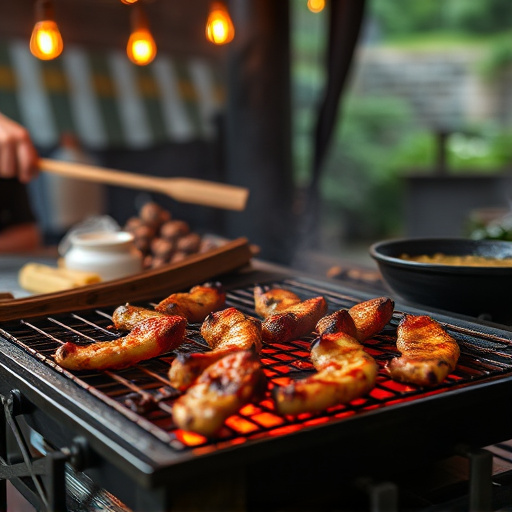
When storing leftovers, place the covered pork tenderloin in the refrigerator for up to 3-4 days. The honey garlic glaze remains delicious when refrigerated, allowing you to enjoy the flavors again without losing quality. For best results, reheat gently in a saucepan or oven before serving. If using the glaze for future cooking, keep it sealed and store in the freezer for up to 2 months.
This method ensures that your Pork Tenderloin BBQ Recipe remains mouthwatering, even after multiple servings. The key is to maintain proper coverage and temperature control, preserving both the taste and texture of the tenderloin.
